A skill requires practicing technique in order to make the movement or activity as efficient as possible. It’s all about maintaining your consistency. Similarly to playing an instrument, you wouldn’t practice until your hand falls off but you would practice frequently without burning out. Consistently practicing technique in small increments allows you to progressively build on a skill until you master it.
Skill related to fitness doesn’t necessarily mean you have achieved a skill, but it means training in a way that enables you to gain the ability to achieve a certain skill. For example, training your balance is very important for an ice skater and their ability to nail certain tricks. Football players need solid agility to be able to start and stop frequently during a game.
The same thing applies to deadlifting and any movement. The singular goal of building strength is inefficient when compared to the goal of mastering a skill.
Why Skill Related Fitness Can Keep You Motivated
Working toward skill mastery reprioritizes your training. It can also take the focus off of the scale or other aesthetic goals and reapply that focus to your actual movement goals. And, when you shift your mentality to achieving skills in the gym, the aesthetics you’re looking for usually come along as well.
It’s really exciting to show up to your workouts day in and day out when you have a specific movement you want to be able to accomplish.
I started training handstands over two years ago now. It took almost a year for me to be able to kick up and hold for 5 seconds. It was the most frustrating journey, but the most rewarding at the same time. When you work hard for something, the end result is that much sweeter. In the process of my handstand training, my shoulder muscles grew which was a nice side effect I wasn’t even trying to accomplish.
Skill Related Fitness Examples
Handstands
When it comes to training handstands, you need to be training the strength to hold them and the skill of hand balancing.
Let’s break down what this looks like as far as what exercises are going to be your best bet for accomplishing both of these components.
Chest to wall holds are going to be your staple when it comes to the beginning stages of your handstand training. This is going to give you the prerequisite strength you’ll need to be able to hold yourself upside down. It will also help solidify the proper body position that will translate to your freestanding holds when the time comes.
Toe pulls are going to be your second best friend when learning the balance component of handstand. Simply perform a wall walk and keep the legs slightly off the wall. Pull one foot off of the wall and then the other following and try to hold your feet off the wall for 2-5 seconds.
Split kick ups are the best exercise for training the handstand entry. I like to have clients start near a wall so the front foot is lightly supported on it so it’s easier mentally at first knowing you have the wall support there.
Eventually, you can try these without the wall in front of you. You will use these to figure out the delicate dance of kicking up enough to bring the legs in the air vs kicking up too much to where you are falling forward. These are very frustrating and will take a long time to figure out!
Pistol Squats
This is another skill related fitness example that requires adequate single leg strength and enough balance and stability.
First, you must be doing some unilateral training as a prerequisite strength builder to make sure you have enough strength on the one limb to perform the pistol squat.
From there, most people go about training pistol squats the wrong way. They fail to train hip compression which is the most overlooked aspect of the pistol squat and the most important component. Hip compression in this case is being able to lift the non-squatting leg off the floor. You will not be able to achieve a pistol squat if you don’t have the strength to do this because the non squatting leg will run into the floor and you will not be able to achieve a full range of motion pistol squat.
You must also have adequate balance and stability on the squatting leg so you’re not falling backwards at the bottom. You need to have strong feet and ankles to achieve the stability you’re looking for.
Cleans and Snatches
These are the most technical movements you will ever do with a barbell. You will likely spend the first 6 months of training the olympic lifts with just a pvc pipe to drill the proper execution over and over again.
The contact drill is going to be your best friend for transitioning from the first pull into triple extension.
Assume your power position for the snatch and lightly tap your thighs at the exact point you’d like to make contact and on the third tap go into triple extension as you tap the thigh. Otherwise, you are going to have to train each component of the lift to perfect technique (which is imperative in order to perform these technical movements safely as you add load).
Motor Learning and Confidence from Skills
When you master a new skill, you feel competent. This leads to confidence and improved performance. Training a skill can help you stay focused on the process while working towards an end goal.
Additionally, skills training challenges the mind and body, creates new neural pathways, and recruits additional muscle fibers; allowing you to break through plateaus and become stronger and more efficient in your training.
Technique is Key
Remember that training skill based fitness means working toward mastery and perfecting technique over time. You want to be well rested and fresh for sessions. Be mindful and deliberate every single second or rep of your skill movement practice of choice. Try to achieve perfect form every single time, even though it might not be perfect yet – be mindful of your intent and the mastery will come.
Hiring an online personal trainer can help you ensure your form is correct and you’re taking the right steps toward mastering your skill. A remote fitness coach can provide high-level programming with your goals, limitations, and preferences in mind.
Interested in working toward a specific skill? Let us know if our facebook group or fill out an interest form to chat with us about online fitness coaching.



